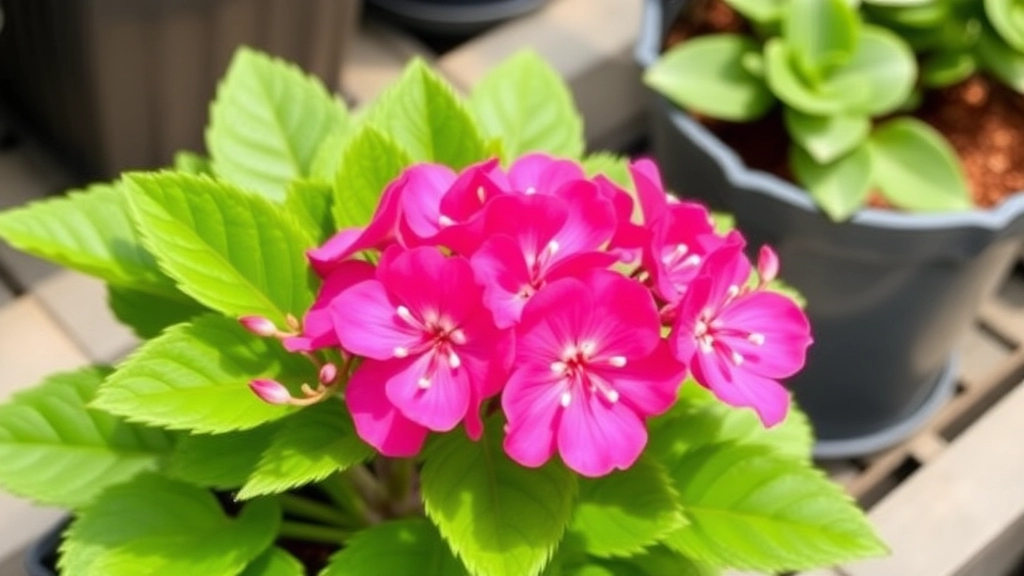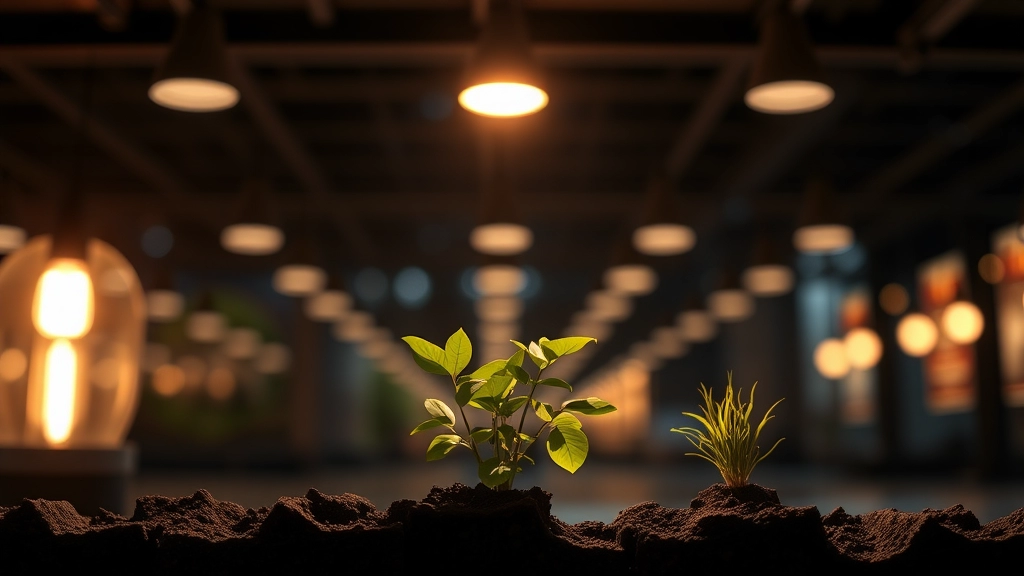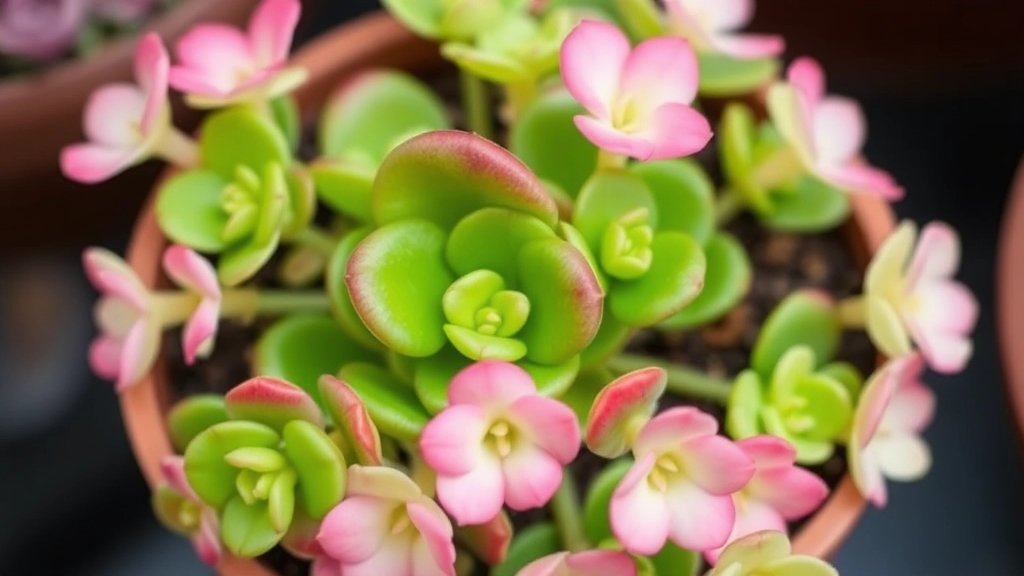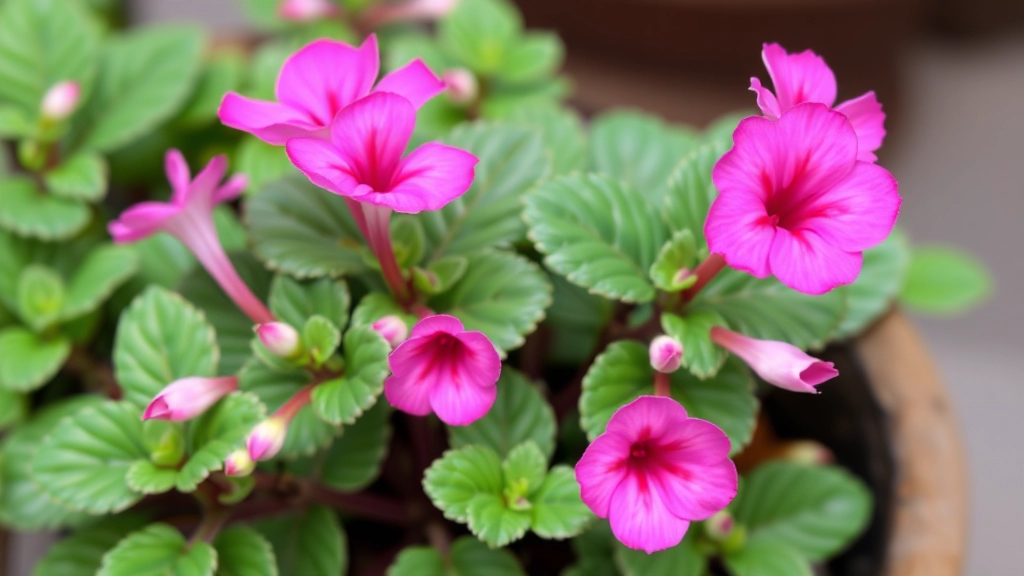Hot Pink Kalanchoe Plant
Looking to add a splash of vibrant colour to your indoor or outdoor garden? The Hot Pink Kalanchoe Plant is your go-to choice. With its unique characteristics and eye-catching blooms, this plant not only enhances your space but also demands minimal care. Let’s dive into what makes this plant special and how you can keep it thriving.
Understanding Ideal Growing Conditions
Understanding the ideal growing conditions for a Hot Pink Kalanchoe is crucial. From watering needs to light requirements, knowing these details ensures your plant stays healthy and vibrant. Whether you’re a seasoned gardener or a newbie, these tips will help you avoid common pitfalls like overwatering and pest issues.
Essential Care Tips
Ready to make your Kalanchoe flourish? Keep reading for all the essential care tips.
Unique Characteristics of the Hot Pink Kalanchoe Plant
When it comes to houseplants, the Hot Pink Kalanchoe stands out for its vibrant colour and unique attributes.
This succulent is known for its stunning clusters of bright pink flowers that can bring a splash of colour to any indoor or outdoor space.
Key Features:
- Fleshy Leaves: The Kalanchoe has thick, succulent leaves that store water, making it drought-resistant.
- Long Blooming Period: Unlike many flowering plants, the Hot Pink Kalanchoe can bloom for several weeks, often from late winter to spring.
- Compact Growth Habit: This plant typically grows to about 12-18 inches tall, making it perfect for smaller spaces or as a decorative tabletop piece.
- Versatile: It thrives in various environments, whether indoors on a sunny windowsill or outdoors in a garden setting.
These unique characteristics make the Hot Pink Kalanchoe an attractive choice for both novice and experienced plant enthusiasts. For more detailed care instructions, check out our Ultimate Guide to Growing and Caring for Succulent Plant Kalanchoe. Additionally, if you’re interested in other vibrant varieties, explore our Ultimate Guide to Growing Kalanchoe Pink Flowers.
Ideal Growing Conditions for Hot Pink Kalanchoe

So, you’ve got your eye on that stunning Hot Pink Kalanchoe, but where should you place it to thrive? It’s a common concern for plant lovers.
Temperature and Humidity
Hot Pink Kalanchoe loves a warm environment.
- Ideal Temperature: Aim for a cozy range of 20-25°C (68-77°F).
- Humidity: This plant isn’t too fussy about humidity but thrives in moderate levels.
Location Matters
Finding the right spot can make all the difference.
- Indoors: A bright windowsill is perfect.
- Outdoors: If you’re putting it outside, ensure it’s in a sheltered area—too much wind can be harsh.
Seasonal Changes
Keep an eye on the seasons.
- In winter, bring your Kalanchoe indoors if temperatures drop below 10°C (50°F).
Air Circulation
Good airflow is key.
- Ensure it’s not crammed between other plants.
III. Watering Needs: How to Avoid Overwatering
Many plant enthusiasts often worry about the delicate balance of watering their Hot Pink Kalanchoe.
Overwatering can be detrimental, leading to root rot and other issues. So, how do you ensure your Kalanchoe thrives without drowning it?
Light Requirements for Thriving Growth

Are you wondering why your Hot Pink Kalanchoe isn’t thriving? One of the most critical factors for its health is light.
Understanding Light Needs
Hot Pink Kalanchoe plants flourish in bright, indirect sunlight.
- Optimal Light: Aim for around 6 hours of bright light daily.
- Direct Sunlight: While Kalanchoe can tolerate some direct sunlight, too much can scorch their delicate leaves.
- Low Light: Insufficient light can lead to leggy growth and fewer blooms.
Best Locations for Your Kalanchoe
Choosing the right spot in your home or garden can make all the difference.
- Indoors: A south or west-facing window is ideal.
- Outdoors: Place your Kalanchoe in a location that receives filtered sunlight, especially during the hottest parts of the day.
Signs of Improper Lighting
Keep an eye on your plant for signs of stress:
- Yellowing Leaves: Often indicates too much direct sun.
- Stretched Growth: A sign of insufficient light, leading to leggy stems.
When it comes to ensuring your Hot Pink Kalanchoe thrives, the right soil mix is essential. You might be wondering, “What kind of soil is best for my Kalanchoe?” Let’s dive into the details.
### Key Components of the Ideal Soil Mix:
– **Well-Draining Soil:** Kalanchoe plants are succulents, which means they require soil that drains well to prevent root rot. Look for a mix specifically designed for cacti and succulents.
– **Organic Matter:** Incorporating organic materials, such as peat moss or compost, can provide essential nutrients while maintaining moisture balance.
– **Perlite or Pumice:** Adding perlite or pumice to your soil mix enhances aeration and drainage, ensuring that the roots have enough oxygen.
– **pH Level:** Aim for a slightly acidic to neutral pH, ideally between 6.0 and 7.0. This range supports optimal nutrient uptake.
### Recommended Soil Mix Recipe:
– 40% potting soil (cactus mix is preferred)
– 30% perlite or pumice
– 30% compost or peat moss
This combination creates a well-balanced environment that promotes healthy growth and vibrant blooms.
### Why Soil Matters:
Choosing the right soil mix not only supports the plant’s health but also reduces the risk of pests and diseases. A well-draining mix helps keep the roots dry and prevents overwatering, which is a common issue for Kalanchoe owners. For more detailed information, check out our [best soil for Kalanchoe Blossfeldiana care tips](https://planthq.org/best-soil-for-kalanchoe-blossfeldiana-care-tips/) and learn about [fixing etiolated Kalanchoe Blossfeldiana](https://planthq.org/fixing-etiolated-kalanchoe-blossfeldiana-lighting-and-care-tips/).
Propagation Methods for Kalanchoe Plants

So, you’re loving your Hot Pink Kalanchoe and thinking about spreading the joy? Great idea! Propagating Kalanchoe is not only rewarding but also super easy.
Why Propagate?
- Cost-effective: Instead of buying new plants, you can create your own.
- Personalisation: You can grow more of your favourite varieties.
- Sharing: It’s a lovely gift for friends and family.
Methods to Propagate Kalanchoe
- Leaf Cuttings
- Choose a healthy leaf from your Kalanchoe.
- Cut it cleanly at the base.
- Let it dry out for a day or two to form a callus.
- Place it in well-draining soil and water lightly.
- Keep it in bright, indirect light.
- Stem Cuttings
- Snip a healthy stem, about 3-4 inches long.
- Remove the lower leaves to avoid rot.
- Allow the cut end to callus for a day.
- Plant it in a pot with soil, water sparingly, and keep it in a warm spot.
- Offsets
- Some Kalanchoe varieties produce offsets or “pups.”
- Gently separate these from the mother plant.
- Replant them in their own pots with fresh soil.
- Water lightly and give them some light.
Tips for Successful Propagation
- Timing: Spring or early summer is ideal.
- Humidity: A little extra humidity can help, so consider covering your cuttings with a plastic bag for a few days.
- Patience: It might take a few weeks for roots to develop, so hang tight!
As you nurture your Hot Pink Kalanchoe, it’s essential to remain vigilant against common pests that can disrupt its vibrant growth.
### Common Pests
– **Aphids**
– Tiny, pear-shaped insects that suck sap from the leaves.
– They can cause curling and yellowing of leaves.
– **Mealybugs**
– Small, white, cotton-like pests often found in leaf axils.
– They can lead to a sticky residue on the plant.
– **Spider Mites**
– Microscopic pests that thrive in dry conditions.
– Look for fine webbing and tiny yellow spots on leaves.
– **Scale Insects**
– Brown, shell-like bumps on stems and leaves.
– They can weaken the plant by sucking its sap.
### Management Strategies
– **Regular Inspection**
– Check your plant weekly for signs of pests.
– **Natural Remedies**
– Use a mixture of water and mild soap to spray affected areas.
– Neem oil can also be effective against various pests.
– **Isolation**
– If you spot pests, move the affected plant away from others to prevent spreading.
– **Maintain Humidity**
– For spider mites, increasing humidity can deter their presence.
– **Encourage Beneficial Insects**
– Ladybugs and lacewings can help control aphid populations naturally.
To ensure your Hot Pink Kalanchoe thrives, consider following a detailed [care guide](https://planthq.org/kalanchoe-succulent-pink-care-growth-propagation-guide/) that includes tips on managing pests and promoting healthy growth. Additionally, for more information on different varieties and their specific needs, you can explore the [top Kalanchoe succulent varieties](https://planthq.org/top-kalanchoe-succulent-varieties-and-care-tips/).
Indoor and Outdoor Care Tips for Hot Pink Kalanchoe
So, you’ve got your stunning Hot Pink Kalanchoe and now you’re wondering how to keep it thriving, right? Whether you’re nurturing it indoors or letting it bask in the sun outside, there are a few essential care tips to keep in mind.
FAQs About Hot Pink Kalanchoe Plant
What are the ideal growing conditions for a Hot Pink Kalanchoe plant?
The Hot Pink Kalanchoe thrives in a warm environment with moderate humidity. The ideal temperature range is 20-25°C (68-77°F). Indoors, a bright windowsill is perfect, while outdoors, it should be in a sheltered area to avoid harsh wind.
How should I adjust care for my Kalanchoe during seasonal changes?
In winter, bring your Kalanchoe indoors if temperatures drop below 10°C (50°F). Ensure it has good air circulation and is not crammed between other plants.
What are the light requirements for a Hot Pink Kalanchoe?
The plant flourishes in bright, indirect sunlight, needing around 6 hours of light daily. While it can tolerate some direct sunlight, too much can scorch its leaves. Insufficient light can lead to leggy growth and fewer blooms.
Where is the best location to place my Kalanchoe?
Indoors, a south or west-facing window is ideal. Outdoors, place it in a location that receives filtered sunlight, especially during the hottest parts of the day.
What are the signs of improper lighting for my Kalanchoe?
Yellowing leaves often indicate too much direct sun, while stretched growth is a sign of insufficient light, leading to leggy stems.
Why should I propagate my Hot Pink Kalanchoe?
Propagation is cost-effective, allows you to grow more of your favorite varieties, and provides lovely gifts for friends and family.
What are the methods to propagate Kalanchoe?
You can propagate Kalanchoe through leaf cuttings, stem cuttings, or offsets. Each method involves choosing healthy parts of the plant, allowing them to callus, and planting them in well-draining soil.
When is the best time to propagate Kalanchoe?
Spring or early summer is ideal for propagation. A little extra humidity can help, so consider covering your cuttings with a plastic bag for a few days. Be patient as it might take a few weeks for roots to develop.
References
-
Kalanchoe Plant Care – Gardening Know How
-
How to Grow Kalanchoe Indoors – The Spruce
-
Kalanchoe: How to Grow and Care for Kalanchoe Plants – The Old Farmer’s Almanac
